A bead on design
Catherine Hysell is in her Walla Walla studio spinning thousands of tiny glass beads onto a length of nylon thread.
Once she has a strand long enough to work with, she grabs a crochet hook and, using a special knotting technique, begins knotting the thread into long, surprisingly fluid, colorful rope.
The rope will form the basis of a bracelet, long necklace, or choker, which may be embellished with semi-precious stones or large decorative beads.
Bead crochet is a time-consuming process that has occupied countless hours over the 20 years since Hysell first learned her craft.
She had been making delicate beaded jewelry for herself and friends but had no experience in needlework when she signed up for a workshop in bead crochet, a technique popularized in the 1920s flapper era. After five fumbling hours, Hysell laughs, she had produced a two-inch rope.
Eventually, the process of crocheting beads became relaxing and meditative for Hysell and she loved the look and feel of end product.
“I love how tactile and serpentine the rope is,” says Hysell. “Since it’s hollow it’s lighter than it looks and when worn it takes on the warmth of the body.”
Hysell’s friends loved the beaded ropes too. Indeed, so many were requesting her work that she decided to leave her career as a licensed clinical social worker and devote all her time to crafting beaded jewelry.
Soon, her wearable art was being sold in galleries and fine jewelry stores in New York, Chicago, Seattle and elsewhere.
Hysell’s passion for design has familial roots. Her father is an architect with an international portfolio and her mother is a visual artist. As a result of her father’s work, the family lived in cities across the United States and did a stint in Riyadh, Saudi Arabia.
Whenever possible, the family traveled.
“I’ve had the good fortune to visit all the European countries, the UK, Mexico, Africa, India, China and Hong Kong,” says Hysell.
She credits her travels, particularly her trips to India, for having shaped her aesthetic style.
Hysell was living in San Diego and her parents in Sonoma, Calif., when they started exploring a joint move. It was important for them to find a community that had colleges or universities, good health care, and a vibrant arts scene.
After a weekend of Walla Walla wine tasting, they knew they’d found their next home.
“Walla Walla is the first small city I’ve lived in,” says Hysell, “I’m blown away by how welcoming and friendly people are and the strong sense of community here.”
Hysell moved into a small bungalow near the Whitman College campus and converted one bedroom into her studio — a light filled room with colorful stacks of containers holding beads from Japan, Czechoslovakia and elsewhere.
When not in her studio, Hysell is often found managing store displays at Sweetwater Paper and Home on the corner of Alder Street and First Avenue in downtown Walla Walla. Her line of delicate Indian-inspired earrings is available for purchase at the store.
Hysell’s beaded rope jewelry is also sold at Falkenberg’s Jewelry on Main Street in Walla Walla and through her website, www.catherinehysell.com.
During the month of February, her work will be featured as part of a jewelry show at Combine Art Collective on Colville Street in Walla Walla.
New Samsung VR Headset Design Surfaces in Recent Patents
Samsung recently filed patents with China’s National Intellectual Property Administration (CNIPA) office that shows off a few new designs in what appears to be two fairly similar PC VR headsets.
There’s little to go on besides the photos of both design patents, which were first uncovered by 91Mobiles, although we can hypothesize a bit from what we see below.
Unlike Samsung’s previous HMD Odyssey and Odyssey+ headsets, which sports two outward-facing camera sensors, it isn’t clear exactly what tracking standard the proposed headset(s) may use.
As seen in the renders and diagrams, a translucent cover houses a cage-like piece that has four prominent divots on the front; with such little information, these could be any number of things, including SteamVR sensors, outward-facing camera sensors, or simply attach points for the cover itself.
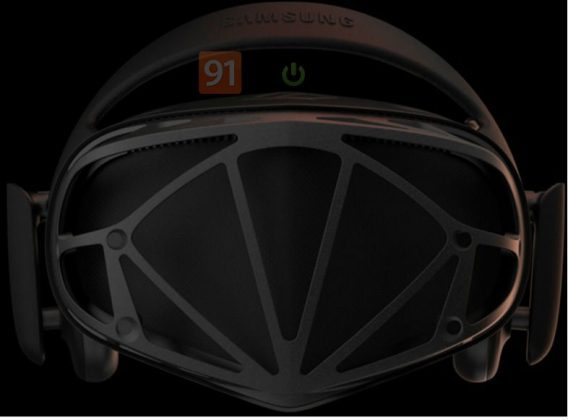
Image courtesy 91Mobiles
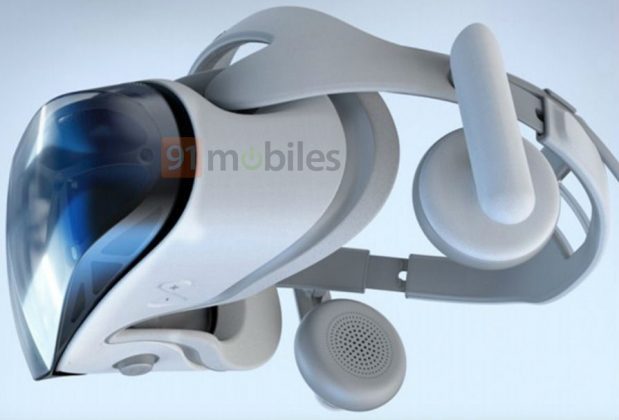
Image courtesy 91Mobiles
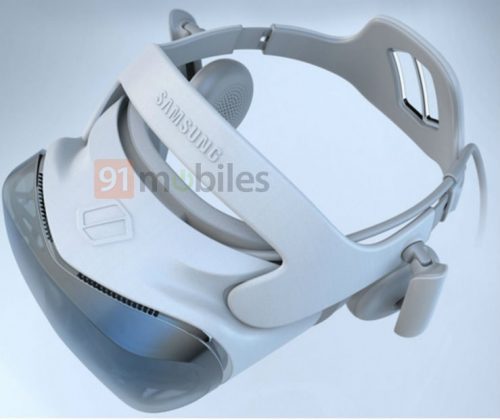
Image courtesy 91Mobiles

Image courtesy 91Mobiles

Image courtesy 91Mobiles

Image courtesy 91Mobiles
Otherwise, the render shows off a very similar design and strap system to the Samsung HMD Odyssey, which also features integrated audio. A cable trailing off on the left side of the headset betrays it as a tethered PC VR headset.
The second patent uncovered by 91Mobiles is a little less mysterious regarding its positional tracking standard. As if VR headsets didn’t look strange enough, this one shows off a prominent faceplate that seems to be drawing inspiration from the insect world. We weren’t unable to locate the above patent, but the insectioid design can be found officially listed on the CNIPA website.
SEE ALSO
HTC is Giving Away 2 Free Months of Viveport Infinity to Samsung Odyssey Owners
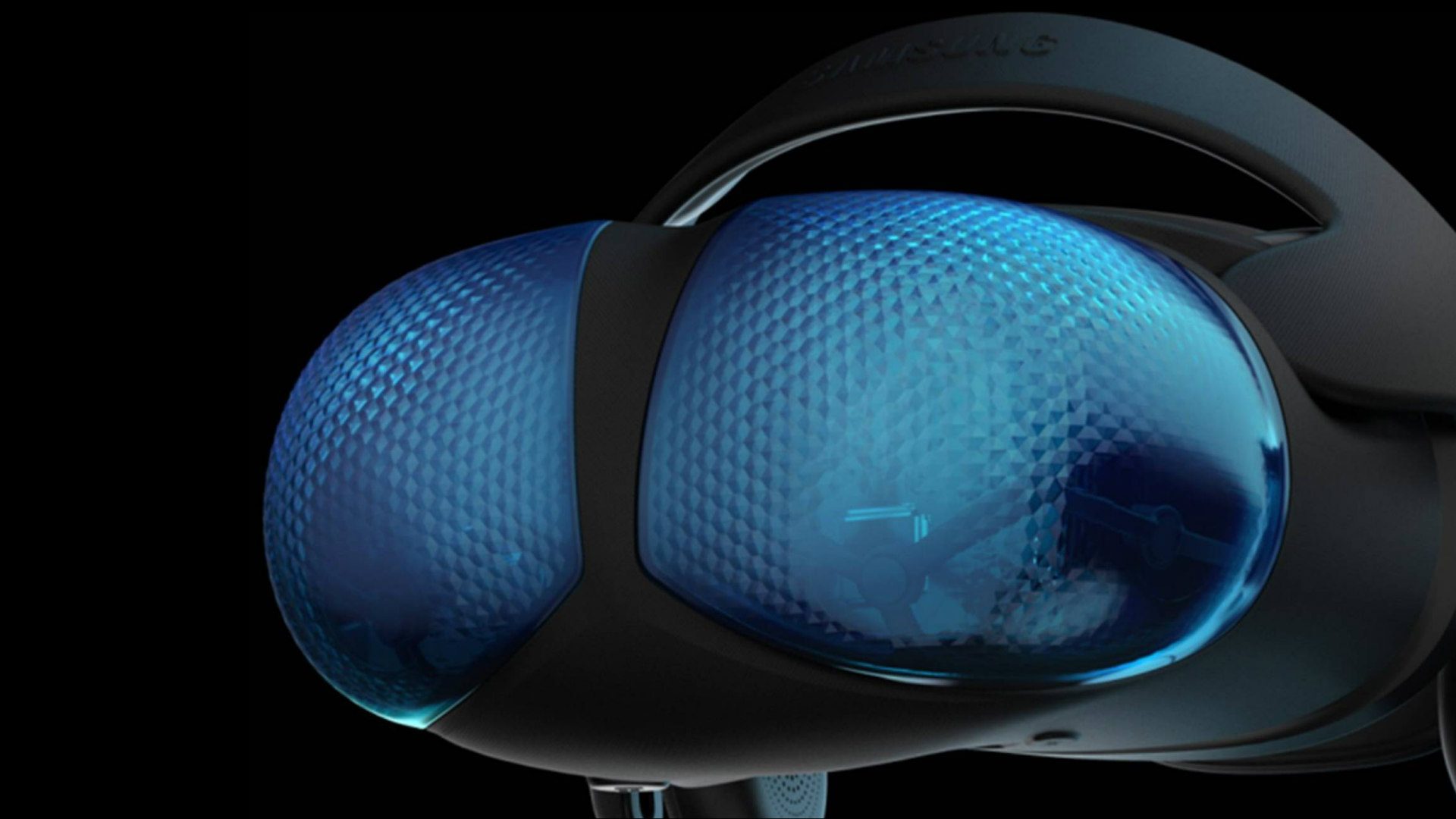 Image courtesy CNIPA
Image courtesy CNIPA
Underneath the translucent faceplate appears to be four optical sensors, which appear to cover the front, and left and right flanks. The Odyssey line of Windows Mixed Reality headsets only has two forward-facing sensors, but in more or less the same locations as the front-facing ones seen below in the diagrams.
Note: both headset designs sport the same logo on the top of the headset and integrated into the strap system on the back, which could denote a line apart from the Odyssey Mixed Reality headset line (see update).

Image courtesy CNIPA

Image courtesy CNIPA
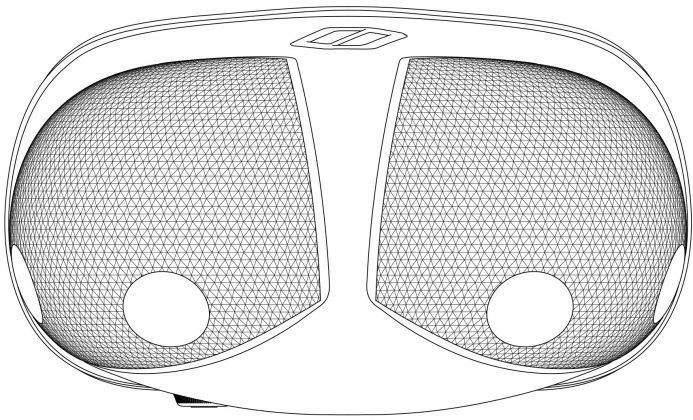
Image courtesy CNIPA
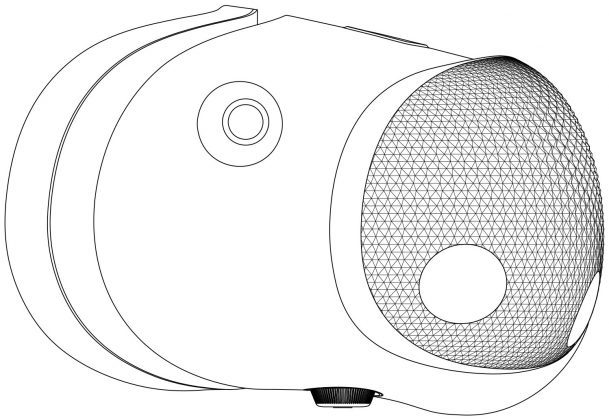
Image courtesy CNIPA
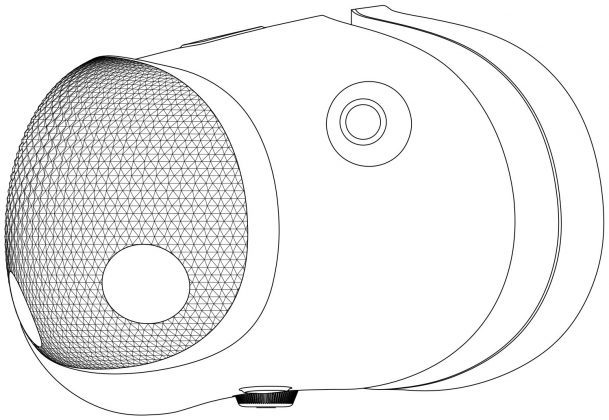
Image courtesy CNIPA
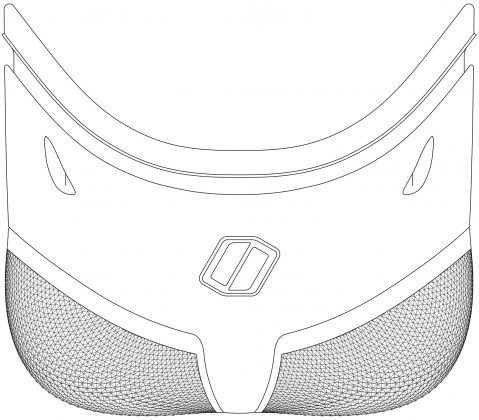
Image courtesy CNIPA
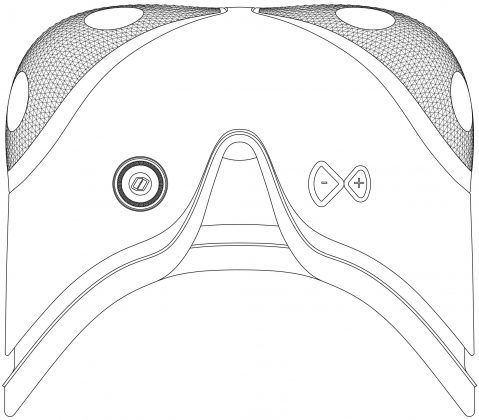
Image courtesy CNIPA
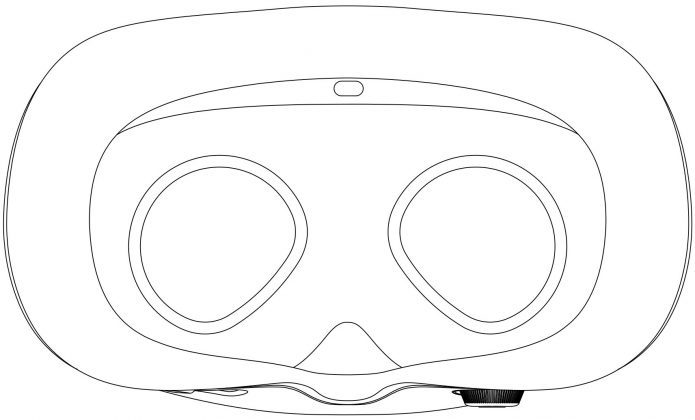
Image courtesy CNIPA
Samsung has yet to give any indication as to whether it intends to actually produce the headset, be in one form or the other. As it is, all products have patents, but not all patents become products, so only time will tell.
The above patent was published recently, however it was filed on January 3rd, 2019, so there’s no telling when/if the design will find its way to other main patent offices soon as the process may differ from country to country.
Update (1:20 PM ET): the logo seen in the design patents above incorporate the Odyssey logo, which is used on the company’s laptop line, but not their previous VR headset line as such. Thanks goes to ‘dk’ for pointing it out.
Boutique hotels are all the rage — but no one can agree on what, exactly, a boutique hotel is
In 2019, a boutique hotel on a remote, private island in Norway owned by polar explorer Børge Ousland debuted three eco-friendly "sea cabins" on the edge of the Barents Sea. Clad in aluminum and featuring a waterside glass wall, they cost a minimum of $390 per night, are only accessible by ferry from the mainland — and are already booked into September.
Manshausen Island 2.0 is just one example of the boutique hotel rage that seems to be sweeping the world. The term has 1.5 million hashtags on Instagram and has been used to describe everything from an art-filled hotel with apartment-style rooms in downtown Asheville to cocoon-like suites with infinity pools on an island in Santorini. There's even a committee that spends an entire year visiting boutique hotels around the world and judging the best accommodations.
So what, exactly, is a boutique hotel? They have a certain je ne sais quoi, but beyond that, no one quite agrees on what they are.
To get to the bottom of this question, Business Insider spoke with four industry experts: Ian Schrager, the legendary hotelier behind boutique hotel brands EDITION and PUBLIC; Shlomo Gabbai, director of the annual Boutique Hotel Awards, which recognizes excellence among luxury boutique hotels around the world; Deanna Ting, author of "The Complete Oral History of Boutique Hotels," a 60,000-word longform article published in 2016 that focuses on the development of boutique hotels in the US; and Bjorn Hanson, who retired as a professor at NYU's Jonathan M. Tisch Center of Hospitality and now works as an industry consultant.
But from the size of the establishment to the details that make it "boutique," there was only one aspect of boutique hotels that all four agreed on: The term has evolved over time and will continue to do so.
As Gabbai put it, "In truth, there is no official definition."
Boutique hotels are rooted in a sense of place and evoke a "special" feeling
"Special" is the word that surfaced most in conversation — Ting, Gabbai, and Hanson all used it at least once.
"Boutique is maybe just like another way of saying 'special' or 'memorable' or 'different,'" Ting told Business Insider. "That's kind of what everyone is looking for — that magic."
The Artisan Hotel in Las Vegas features a lobby filled with gothic art. Courtesy of Artisan Hotel Boutique Gabbai agreed. In 2019, the Boutique Hotel Awards judging panel received over 300 hotel nominations spanning 80 countries. They whittled the list down to 15 "world's best" winners, ranging from World's Best Beach or Coastal Hotel and the World's Most Inspired Design Hotel to the World's Best Wellness Spa.
"There are an infinite number of recipes, but the key ingredients I see in a boutique hotel are individuality and a great emotional impact," he said.
Schrager, meanwhile, described the experience of a boutique hotel as "elevated."
"It has to appeal to a certain sensibility as much as if it were demographic. It's all about the attitude," he said.
The experience of a boutique hotel begins the moment a guest walks in the door, according to Hanson. "At the end of the first minute, someone at a boutique hotel should feel like he or she is being kind of captured with whatever that experience is," he said.
A range of factors can create this experience. "It can be the location, architecture, design, history or just something clever that is part of a theme," Hanson said.
The Sanya EDITION hotel on Hainan Island off the coast of southern China draws design inspiration from the surrounding sea and beach and nods to Sanya's history as a port city. The Sanya EDITION
Boutique hotels are also often rooted in a sense of place — one that appeals not just to travelers, but locals as well.
"It's not meant to just be a place where people check in, check out. It's meant to be a fixture of that specific community that it is part of," Ting said.
Consider ACE hotels, a chain of art-filled boutique hotels that opened in Seattle in 1999, has branches across the US and London, and will be opening in Kyoto and Toronto later this year. The hotels' lobby bars, seating areas, and event spaces often seem to draw as many locals as guests.
Boutique hotels have been around for decades — and today's boutique hotels don't look like the early ones
Boutique hotels emerged in the US beginning in the 1980s. Credit for the first boutique hotel is largely given to either Bill Kimpton, who launched his first Kimpton hotel in San Francisco in 1981, or Ian Schrager and Steve Rubell, who launched the now-closed Morgans Hotel in New York City in 1984. Both sets of hoteliers, as Ting and Schrager put it, created an experience different than the chain brands at the time.
"Anouska Hempel could [also] lay a strong claim with her design of The Blakes Hotel for launch in 1981," Gabbai said, though he noted the difficulty of determining the first boutique hotel. "Finding the first is as hard to pin down as the definition of a boutique hotel itself," he said.
Schrager, who is often cited as the father of boutique hotels, noted that he and his partner Steve Rubell started using the term "boutique" in a retail analogy to compare Morgans Hotel to larger chains.
Placing a heavy emphasis on design, they set out to become places where not only travelers, but also locals went, according to Ting.
"We were trying to say that all the other hotels were like department stores — they were trying to be all things to all people — and we were like a boutique," he said.
In terms of size, boutique hotels started out small, less than 100 rooms by various estimates. Placing a heavy emphasis on design, they set out to become places where not only travelers, but also locals went, according to Ting. Over time, boutique hotels have increased their scale and branding efforts and are no longer found just in urban centers, she said.
The line between boutique hotels and mainstream hotels is blurring
Changing traveler tastes and technology have also opened the door for larger brands to follow the boutique hotel model.
Beginning in the '90s, hotel chains, with W Hotels leading the charge, started recognizing the boutique hotel model as a concept they could adopt, Ting said.
Large hotel brands used to prize uniformity, highlighting "no surprises" in their advertising, according to Hanson. Today, uniformity doesn't carry the same weight.
"Travelers are looking for something that's genuine, that respects local materials and culture and traditions and food," he said.
Boutique and independent hotels started off as synonymous, but that's no longer the case. Kimpton is one example: While it retains its "boutique" identifier, Intercontinental Hotels Group acquired the brand in 2015.
The Byblos Art Hotel in Verona, Hotel, was deemed the World's Most Inspired Design Hotel in the 2019 Boutique Hotel Awards. Courtesy Boutique Hotel Awards
What this all means in practice is that it's often difficult to identify, simply from appearance and branding, whether a hotel is boutique or not.
Boutique hotels constantly adapt to the changing expectations of travelers. Instead of prescribed standards, modern travelers want to experience something novel when they're on the road. It's an appetite that social platforms are fueling.
"Now we don't need that uniformity to avoid unpleasant surprises because between guests posting about experiences and being able to do 3D tours of hotels, now we can not rely on that uniformity to have a good experience," Hanson said.
Size doesn't define a boutique hotel — unless it takes away from that "special" boutique feeling
Whether or not a boutique hotel can have too many rooms was a polarizing subject.
"In our awards, we consistently find that judges record a lack of intimacy and an accompanying loss in the emotional impact that comes with it when hotels push at the upper 'limits' of what might be considered a boutique-sized hotel," Gabbai told Business Insider. "This is somewhere around 85-100 rooms. Although it doesn't make standard business sense to stop doing what works on a bigger scale, in boutique hoteliering, it's crucial."
Awarta Nusa Dua Resort & Villa won the World's Best Boutique Hotel category in the 2019 Boutique Hotel Awards. It consists of 14 private villas. Courtesy Boutique Hotel Awards
Schrager agreed with Gabbai on loss of impact, but not on size. A hotel stops being boutique, he said, only "when it loses its point of view and specific attitude ... when it becomes generic and institutionalized, cookie cutter."
Even if EDITION had one thousand hotels worldwide — which Schrager hopes could be a possibility one day — it could still be a boutique hotel brand, he said.
At that scale, though, there's a tendency to standardize. When a hotel company becomes too big with its brand, "it starts to find ways to discover efficiencies and take what works best in multiple locations and apply it to other locations. That's when the boutique character is lost," Hanson said.
"A boutique hotel stops being a boutique hotel when it stops providing an experience for its guests," he added.
Ting agreed. "I think it's hard to use size or number of rooms a qualifier for that anymore. I think it's when you lose that feeling of being in a special place or having a special experience — that's when your boutique hotel card is removed."
Now that more hotels are trying to be "different" and "special," they face the danger of ultimately looking the same
With an eye on the future of boutique hotels, all four experts had a sense of how the concept will transform in the coming years and what issues it will face. As Schrager put it, the hotel industry is at risk of "falling into the same trap that it always falls into. They all start to look like each other."
Everyone trying to replicate the boutique hotel model is the industry's "hamster wheel," Ting echoed.
Schrager shared his theory that as society divides more deeply into two groups — the 1% and everyone else — hotels will do the same. "Hotels follow what the people are doing," he said. In the future, there will be two main types of hotels: small, incredibly expensive hotels, and hotels for the rest of the population, Schrager predicts.
In order to continue to deliver on the boutique hotel's promise of a special experience in a sea of hotels promising the same, Hanson, for his part, predicts that hotels will resort to using an increasingly high-tech, flashy set of techniques to differentiate themselves. Hanson sees hotels adding devices where guests can change the color of the walls with the flick of a remote device, or even change the firmness of a pillow, in order to continue to deliver on the boutique hotel's promise of being special.
Comments
Post a Comment